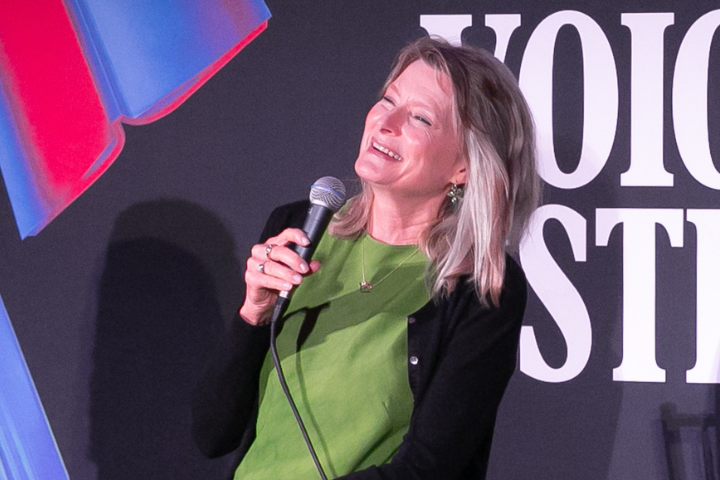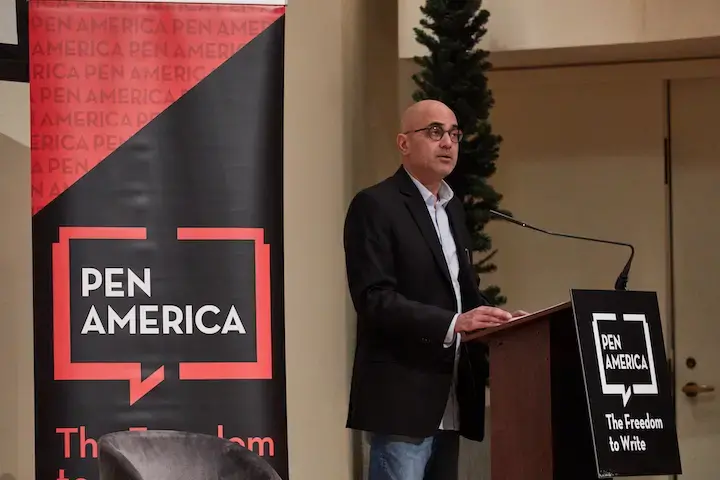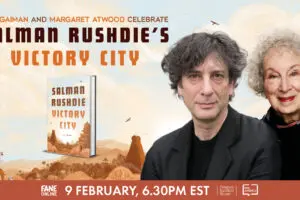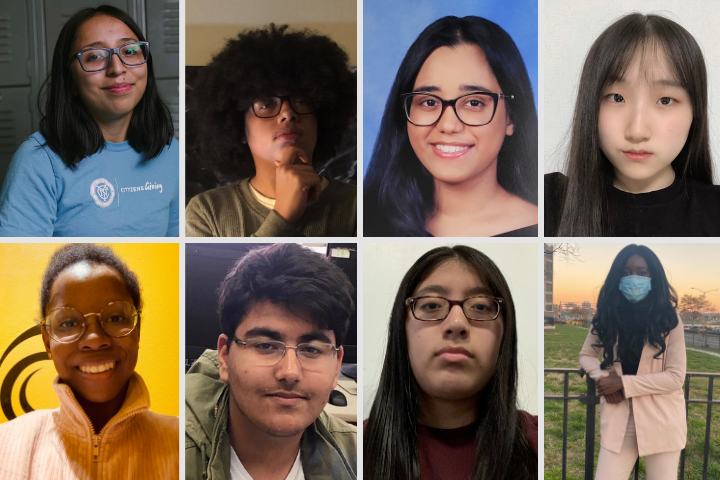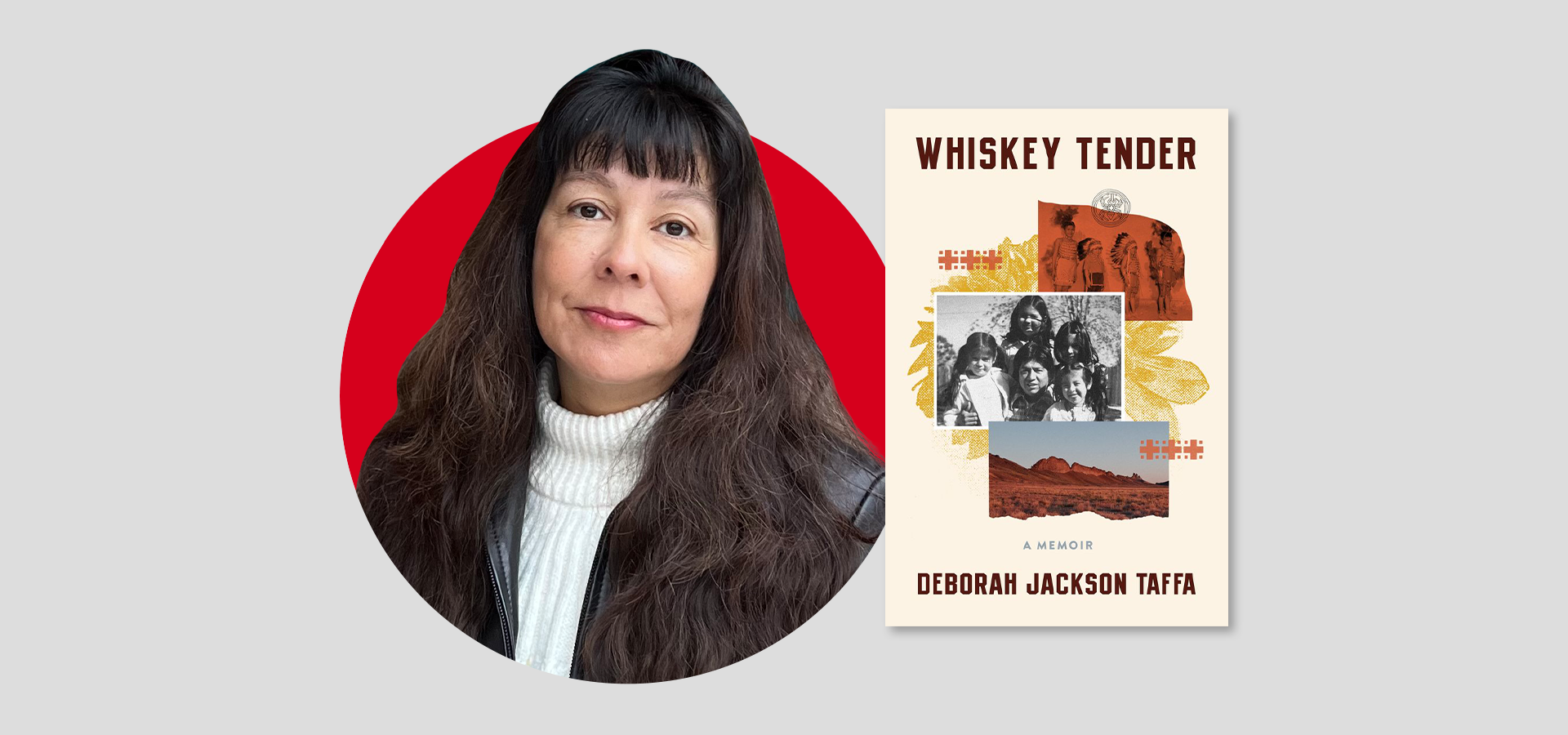
Deborah Jackson Taffa | The PEN Ten Interview
February 29, 2024
Deborah Jackson Taffa‘s debut memoir, Whiskey Tender, stitches together familial, societal, and governmental history that, together, intricately details a Native coming-of-age in the American Southwest. Seamlessly moving through timelines, the memoir explores identity, memory, and hidden narratives, both political and personal. In an interview with Jared Jackson, Program Director for Literary Programs and Emerging Voices, Taffa discusses cultural inheritances, family lore, and creative patience. (Bookshop)
1. As you note early in your debut memoir, Whiskey Tender, Native memoirs are rare. You cite rules, taboo, and belief systems as a few reasons why. What set you on the path toward writing yours? Was there one moment or a broader desire?
To make peace with writing a memoir, I had to acknowledge the genre as political. I could only share my family’s trauma if I told it in context, reminding readers that my elders struggled, not because of a moral failure on their part, but because of societal and governmental pressures. By speaking about actual events, and writing about hidden histories, I hope the book serves as an indictment of what America did to us, and continues to do to us, to this day. Finally, I wrote it because I couldn’t find a Native coming-of-age, written by a woman in my generation. I didn’t want to write a slice-of-life memoir about a specific tragedy. I wanted to write a memoir that transcended trauma to show how I survived and came to thrive as an adult. I think future generations deserve a funny, tender story of survival.
As far as taboos go, I guess artists are always rebels. When I was young, I resisted writing on “Native” topics. I claimed to resent the pressure to write about culture and race. Ultimately, I have been irritated by untrue stereotypes in Indigenous storytelling: the portrayal of poor Natives unable to better their own circumstances. It didn’t fit my experience, so it bothered me. From my father’s workaholic nature to my specific traditions, the story of commodity cheese wasn’t expansive enough. Like a novel, a memoir allows for visceral specificity in scenes, yet it also maintains a political power in saying: these events happened in real life.
2. Memoirs are composed of specific moments in one’s life. Whiskey Tender also features specific moments from your grandparents and parents’ history, too. In order to tell your story, did you feel the need to tell theirs, too? How did you choose which moments to include?
I absolutely felt the need to tell their stories. If this memoir is special in any way, it’s because of them. There have not been very many female Gen X memoirists from Indian country. Louise Erdrich, Joy Harjo, Leslie Marmon Silko are from an older generation, and the new and upcoming female memoirists telling Native stories are by and large millennials. These younger writers have memories that stretch to grandparents in my father’s generation, while my memories stretch to my Granny Ethel who was born in the late 1800s. Geronimo wasn’t captured and sent to prison until 1887. The elders I knew as a child were old world, wise about a way of living no one remembers anymore. They are our link to greater Indigenous values, a love for this land that exceeds what people know or understand today. I remember them in my bones. I ache for them. Writing about them was a chance to honor and bring them alive on the page. I hope people are still reading about my Granny Ethel fifty years from now. She deserves no less. If people had honored her value system more, we may not be in the situation we find ourselves in today with climate change and environmental destruction banging on our front door.
“I could only share my family’s trauma if I told it in context, reminding readers that my elders struggled, not because of a moral failure on their part, but because of societal and governmental pressures.“
3. How can writers affect resistance movements?
An Indigenous life is political. We are, were, and will always be the U.S. government’s first foreign enemy. We were this country’s first threat, and its first victim. Remembering is resistance. Resistance is remembering, and if art is arrangement, the scenes we cut must shape what is politically purposeful in our story. It wasn’t until I decided what and how I was resisting that I could find the thread to my story. What forms of resistance mattered? This has been a question I have asked my entire life. I finally realized resistance is a form of acquiescence. To shape who we are, how we live, and what we write in response to an oppressor is to continue answering “the man.” It wasn’t until I realized I was writing for my children’s grandchildren that I knew what movement the story should take. It had to be a lesson in refusing to forget. It had to be a reclamation of Indigenous values. It seemed so simple once I understood it, but it took me more than a decade to see what was sitting in front of my nose: how I had always lived my life with a value system unique to me and my heritage, even when criticized by strangers, family, and friends. And how I wanted to leave that value system for children who aren’t even born yet.
4. The memoir is rich with historical details about the Native experience in this country. What was your research process like? Was it continuous throughout the process of writing the book?
This question makes me smile because so much of what I wrote that feels “researched” came to me via family lore. My dad told stories. My Aunt Vi told me stories and I wrote them down. I last lived on the reservation between the ages of 27 and 30. In that time, I went and sat on the front porches of my grandpa’s sisters to hear what they had to say. I dabbled a little in research during those years. I went to the Arizona Historical Society in downtown Yuma and looked at slides in the microfiche machine. I read some newspaper articles about my Grandpa Ed, one that included the story of the parachuting Santa Claus that fell to his “death” in the desert, but I couldn’t find full books at any library, and I was mostly going by what my elders told me. It was only in the final phase of drafting the book, after it had been sold, that I thought, “Maybe I should go to the library and see if I can confirm some of these old tales.” I was at IAIA by then, and the library has rare Indigenous books, material that is hard to find elsewhere. It was an incredible joy to find entire chapters on my grandfather and great aunt. My father always told us that his first non-Indigenous home was picked up in San Diego, that my grandfather took him to dismantle some military housing in California to bring back to the reservation. I found an entire section of writing on the day they did it. It was incredible. It was like putting glasses on to see with more clarity than the family lore had allowed me to before.
“A memoirist must not aim to crown people with halos or make anyone a black hat. They are trying to relieve themselves of prejudices and fears, of cognitive dissonance and the protective stance, the urge to render themselves a hero. It takes humility to create a persona of oneself on the page that captures both the finer sentiments and the bad judgment.“
5. How does your writing navigate truth? What is the relationship between truth and memoir?
There is an agreement between the writer and reader when it comes to memoir, the personal essay, and other forms of creative nonfiction. The writer aims to uncover what is hard to see, to share their memories with deep honesty. A memoirist must not aim to crown people with halos or make anyone a black hat. They are trying to relieve themselves of prejudices and fears, of cognitive dissonance and the protective stance, the urge to render themselves a hero. It takes humility to create a persona of oneself on the page that captures both the finer sentiments and the bad judgment. For me, I try to remember the thoughts and strategy I was bringing to my survival at whatever age I happen to be in the portrayal. No one wants a cautionary tale. It’s not the moral of the story that writers and readers seek, but the conundrum at the heart of a life that has no answer. The only interesting questions are those that feel impossible to satisfy. From there, a faithful rendering of what you thought you were doing as an actor in that time will be interesting. For me, working from memories, family mysteries, interviews of relatives, old photos, and old documents, created boundaries that felt helpful. If I wrote fiction, I’d probably make myself more interesting than I am. There is a limited amount of material to choose from when writing nonfiction. You can’t leap off into the imagination like you can in fiction. You must shape the material you have, the events as they transpired, into interesting language. Maybe I have a large imagination, but those boundaries feel reassuring to me as a writer.
6. In many ways, I found the memoir to be about, among other things, the nature of discovery—your mother’s to the worldliness of your father, yours to your heritage—and where that leads you, for better or worse. In the writing of the memoir, what did you discover about yourself or the process that you didn’t expect?
I came to love my mother more fully by writing this book. My father has always been an icon. His connection to his tribal traditions were so rich. The wisdom he brought my childhood problems illuminated my path, and I thought readers would love him. But, for me, my mother’s desire to keep him in her corner, to be his primary focus, always separated us. Writing the book, her jealousy of his deep emotional connect to his tribal past felt very tragic and understandable, especially given her own complicated identity. Before writing the book, she baffled me. Now, she elicits an emotional response that feels rather universal. So many people out there have no idea how they are connected to the earth, to tribal traditions, to power plants, and the past. I think much of the pain in the world comes from this disconnect.
7. What does your creative process look like? How did you maintain momentum and remain inspired while writing Whiskey Tender?
My creative process involves a great deal of patience. I write and rewrite single essays many times, and in between drafts I let them sit. In the last decade, I have let published pieces sit for years before returning to them. I have prioritized self-care over speed, and quality over publication as a motto. I took a long time to finally let this book go—though I don’t think I’ll do the same with my second—because I believed that you only have one debut, and you want it to be the best that you can possibly muster. I never wanted to conflate writing with a desire to create a career. I helped run a construction company. I raised kids. I cooked thousands of meals for my family and washed an enormous amount of clothes. I scribbled and thought and remained obsessed with my project because I felt internal pressure to make sense of my story. It would have been impossible to hand it off for heavy editing or shaping by a publishing house. It had to be very close to the final version when it sold because I didn’t want anyone to pressure me into turning it toward a product that I couldn’t or wouldn’t be proud of. In the end, I had to be happy with the final product. Whiskey Tender is my first book. It is my entrance to the world of publishing. I owed it to myself to take my time. Giving up was never a possibility.
8. As you write in relation to your parents’ ability to reframe a narrative: “They knew a story could be told in various ways.” Your memoir is constructed as a series of essays. How did you choose the form, shape, and “fun house memories” used to shape your story on the page? Was this always its construction?
I’m happy that you recognize each chapter as an essay, by which I mean you could pull any one and it would stand alone. Yet it also works in a solid narrative arc from start to finish, and this is what I enjoy most about the genre we call “creative nonfiction.” It’s flexible and genre bending. It allows a writer to employ lyric fragments that read like prose poetry. It can endure long sections of history or essayistic thought if the language stays true to the telling. The essayist can even employ a structure that mimics a novel. The book was initially written as a collection of essays. Each essay addressed a different kind of violence: environmental, police, domestic, sexual, etc. But then I realized a thread ran through it: my life story. And that story was more expansive than the tale of violence. I began to weave in the personal, drawing out my coming-of-age stories, and the last revision involved an infusion of hidden histories and governmental policies. I relied on my editor at that point. I asked her to make sure that I didn’t digress too far into the historic and political elements that I lost the power of the narrative arc.
“Quality work is created while no one is watching. If we do what we do for discovery and the love of the sentence, rather than for public attention, the work will have integrity. For me, the writing must come from a desire to understand myself and the world with greater clarity and depth.“
9. How does your identity shape your writing? Is there such a thing as “the writer’s identity”?
A book is a representation. It is an articulate performance. A book can’t take your place entirely. It can only contain part of who you are. It took me a long time to make my peace with this. In writing circles, we say that our persona on the page must be complex. We talk about our various identities and look for contradictions in ourselves to create an honest portrayal, but there was no way I could jam everything that I am into this one book. My life has extended too far off the reservation for this first memoir to feel like a complete portrayal of who I am today, and it was very hard for me to realize and accept that I’d have to leave important aspects of my identity out of this telling. This memoir portrays a former self—what feels like a past life. For truly intersectional people, people with assimilation wounds who are nearly schizophrenic in their attempt to create a cohesive value system, it’s hard to minimize digressiveness. If anything, someone like me, needs encouragement to simplify. Intersectional writers don’t need to hear that they have different selves housed inside of them. They need to be taught to choose which aspect of themselves their current work is meant to focus on. With my different cultural inheritances, my Old World traditions, and my contemporary experience butting up against my current life in a rapidly changing world, I had to shape the narrative around a simpler version of myself. What does it matter that I speak fluent Italian? What does it matter that I taught hatha yoga for a decade? If I was irritated by boiling my life down to a kid from the reservation, in the end I was thankful for the cohesive thread the portrayal offered the book.
10. You’re also the director of the MFA creative writing program at the Institute of American Indian Arts (IAIA). How do you balance your position while also maintaining your own creative practice?
Early morning and late nights. There is no way to sugarcoat it. It’s a lot of long hours and hard work! But more Indigenous writers need support systems to publish, so the investment of time is worth it. In terms of balance, I prioritize some form of exercise daily: swimming, rowing, walking. I eat well and make sure I get enough sleep to keep my energy high. I scribble ideas and work on scenes in whatever small spaces of time I have. I say no to socializing on a regular basis. It’s a monastic life and sacrifices are necessary.
For me, it’s important to focus on books rather than single essays. If I must give up one, it’s the latter. I resist the urge to publish often. In the past, I was desperate to remind the public that I was writing. Now, I remind myself that a serious writer can work in anonymity for many years with nothing to prove. Quality work is created while no one is watching. If we do what we do for discovery and the love of the sentence, rather than for public attention, the work will have integrity. For me, the writing must come from a desire to understand myself and the world with greater clarity and depth.
Lastly, when I’m tired, I remind myself what the IAIA community has given me. The burden of representation has been lessened since I started supporting other Native writers in their goals and dreams. I can take myself less seriously, knowing the responsibility to “change the literary landscape” is distributed among many talented people. If I can play a small part in their success, I can enjoy the success of the entire community.
Deborah Jackson Taffa is a citizen of the Quechan (Yuma) Nation and Laguna Pueblo. She earned her MFA at the Nonfiction Writing Program (NWP) in Iowa City and is the Director of the MFA in Creative Writing Program at the Institute of American Indian Arts (IAIA) in Santa Fe, New Mexico. Her writing has appeared in The Rumpus, Boston Review, Los Angeles Review of Books, A Public Space, Salon, the Huffington Post, Prairie Schooner, The Best Nonrequired Reading, and other outlets.
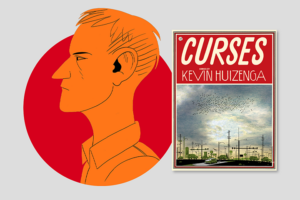
Kevin Huizenga | The PEN Ten Interview
I like to be productive, and sometimes being productive means taking an idea you thought up in a previous story, and expanding on it, or turning it around to look at it from another angle.

Remica Bingham-Risher | The PEN Ten Interview
Some of the breakthrough moments came when I decided I would be reckoning not only with my ancestress’s trauma, but also their joy, and how they raised us to understand that you can overcome nearly anything in your journey.
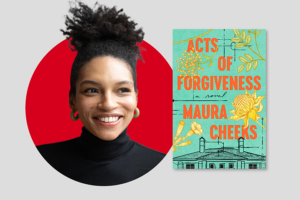
Maura Cheeks | The PEN Ten Interview
I was thinking about what would have to be true for someone in power to take a stand for reparations and push it through.

Kacen Callender | The PEN Ten Interview
I wanted to offer the idea that power is naturally inside of all of us, and that we can feel empowered and worthy and loved even when rejected by others for not meeting their criteria of worth.

